SelgasCano adds a splash of colour to Kensington Gardens with the new Serpentine Pavilion
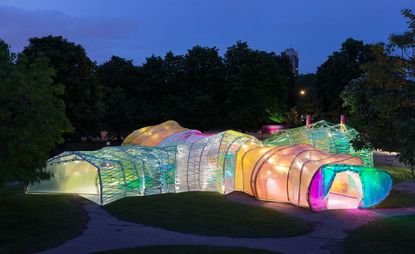
There's always something playful about the annual Serpentine Pavilion designs. These temporary structures, making their appearance for a few months every summer on the grounds of London's Kensington Gardens, have an inherent sense of discovery and mischievousness about them. As structures, they are conceived to serve a functional role (a park's meeting and resting space), but they are also follies designed to inspire and excite, freed from some building constraints by their transient nature. This year's offering by Spanish architecture practice SelgasCano – headed by José Selgas and Lucía Cano – is no exception.
Awash with colour, it's probably even bolder and brighter than Jean Nouvel's brilliant red 2010 edition; the low pavilion's amorphous shape is like nothing the park has seen before. Eye-catching and photogenic, it brings to mind a sprawling, colourful caterpillar, or the retro-sci-fi set of an old episode of Doctor Who.
Up close, the structure feels transparent and light – almost too light at times, its surface gently moving in the opening day's light wind. Its thin skin, made out of panels of translucent, multi-coloured fluorine-based polymer (ETFE) 'woven through and wrapped like webbing', covers several steel-framed tunnels that invite you to explore its core. The architects say their inspiration came not only from the site and context, but also from the London Underground tunnel system; it therefore features a number of entrances (and exits) and 'secret' corridors between layers, for free, yet somehow structured circulation. A cafe sits at its heart, offering ice creams and refreshments courtesy of Fortnum & Mason.
Colour and transparency are frequent elements in the architects' work. Their own office, tucked away in the woods outside Madrid, is partly clad in clear glass, uniting the workspace and nature, while their Merida Factory in Spain and the offices of collaborative workspace Second Home in London bear the practice's signature colours and bold shapes. For the Serpentine, visitor experience defined SelgasCano's approach. 'We sought a way to allow the public to experience architecture through simple elements,' they say. 'Structure, light, transparency, shadows, lightness, form, sensitivity, change surprise, colour and materials.'
In many ways, the unveiling is a landmark one. It certainly marks the start of the British high summer season, but with this year's completed structure, the gallery is also celebrating the hugely popular scheme's 15th year. (It is, the gallery explains, one of the top-ten most visited architectural and design exhibitions in the world). It also signifies the closing of this year's month-long London Festival of Architecture; the pavilion's opening weekend is the festival's very last.
Finally, it completes a series of playful shows, currently ongoing at various London venues – the Hayward's Carsten Höller slides, RIBA's Brutalist Playground installation... even this year's RA Summer Exhibition looks into ideas of landscape and outdoors explorations in its architecture room, curated by Ian Ritchie.
This is just the beginning for the pavilion's four month lifespan. A connected series of talks and events are planned for the duration, while the Serpentine has also launched a brand new initiative around it – Build Your Own Pavilion: Young Architects Competition – a digital platform for young people to submit their own pavilion designs. Winners will be selected at the end of the summer.
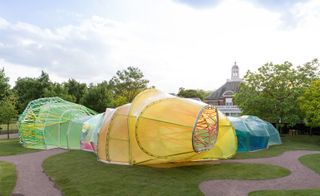
The structure is covered in panels of translucent, multi-coloured fluorine-based polymer (ETFE).
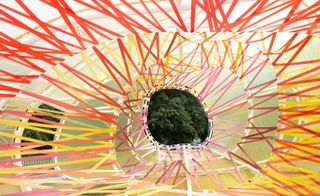
The material is 'woven through and wrapped like webbing', explain the architects.
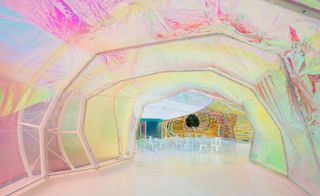
This skin encloses several tunnels between the building's outer and innner layers.
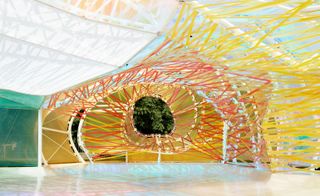
This creates many different entrances (and exits) to the pavilion's heart.

A cafe, serving drinks and ice cream courtesy of Fortnum & Mason, sits at the central open space inside.
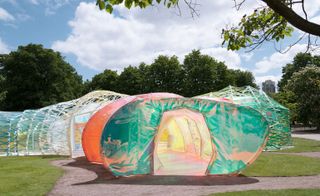
The architects were partly inspired by the London Underground system of tunnels.
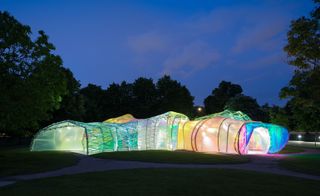
The structure's bright colours come alive at night, when lit from within.
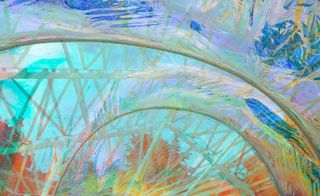
But even during daylight the pavilion's synthetic skin shines and shimmers.
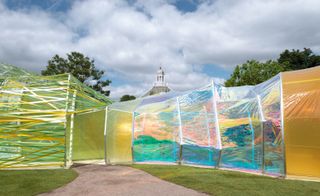
The structure's main frame is made out of steel.

The pavilion was created with the help of engineering firm AECOM in collaboration with David Glover.
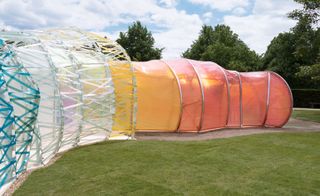
This is not the first pavilion commission for the engineering team...

... who provided expert bespoke technical design solutions for the SelgasCano scheme.
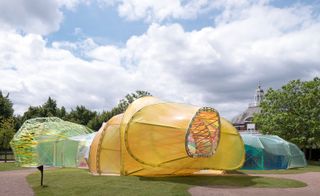
The pavilion's colours and unusual shapes comprise the design signature of its Spanish creators.
ADDRESS
Serpentine Gallery
Kensington Gardens, London
Wallpaper* Newsletter
Receive our daily digest of inspiration, escapism and design stories from around the world direct to your inbox
Ellie Stathaki is the Architecture & Environment Director at Wallpaper*. She trained as an architect at the Aristotle University of Thessaloniki in Greece and studied architectural history at the Bartlett in London. Now an established journalist, she has been a member of the Wallpaper* team since 2006, visiting buildings across the globe and interviewing leading architects such as Tadao Ando and Rem Koolhaas. Ellie has also taken part in judging panels, moderated events, curated shows and contributed in books, such as The Contemporary House (Thames & Hudson, 2018), Glenn Sestig Architecture Diary (2020) and House London (2022).
-
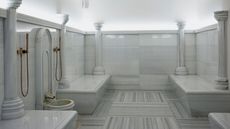 A new book highlights the work of Turkish interior designer Zeynep Fadıllıoğlu
A new book highlights the work of Turkish interior designer Zeynep Fadıllıoğlu‘Zeynep Fadıllıoğlu: Luxury Redefined’, published by Rizzoli, traces the career of leading Istanbul-based designer Zeynep Fadillioglu, the first woman to design a mosque in Turkey
By Léa Teuscher Published
-
 London gallery Incubator’s six emerging artists to see in spring 2024
London gallery Incubator’s six emerging artists to see in spring 2024Incubator's spring programme features six artists in consecutive two-week solo shows at the London, Chiltern Street gallery
By Mary Cleary Published
-
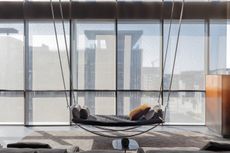 Blue Copper Loft is a Dubai sanctuary for a modern nomad
Blue Copper Loft is a Dubai sanctuary for a modern nomadBlue Copper Loft designed by Anarchitect in the heart of Dubai is a peaceful, yet luxurious sanctuary for a modern nomad
By Ellie Stathaki Published
-
 Tomás Saraceno’s spider-led show at Serpentine has legs, and lots of them
Tomás Saraceno’s spider-led show at Serpentine has legs, and lots of them‘Web(s) of Life’, the first major UK show by Tomás Saraceno, is a living, collaborative and multi-species call to climate action involving everything from dog-friendly sculptures to ‘spider diviners’ – but no phones allowed
By Harriet Lloyd-Smith Published
-
 Steve McQueen to screen his harrowing film 'Grenfell' at London’s Serpentine
Steve McQueen to screen his harrowing film 'Grenfell' at London’s SerpentineAcclaimed film director and artist Steve McQueen will screen his film, Grenfell, at London’s Serpentine South gallery (7 April-10 May 2023), six years after the Grenfell Tower block blaze killed 72
By Harriet Lloyd-Smith Published
-
 Barbara Chase-Riboud at Serpentine: alternative monuments, parallel histories
Barbara Chase-Riboud at Serpentine: alternative monuments, parallel histories‘Infinite Folds’ at Serpentine North Gallery celebrates Barbara Chase-Riboud, the American artist, novelist and poet who has spent more than seven decades pondering history, memory, and the public monument
By MZ Adnan Last updated
-
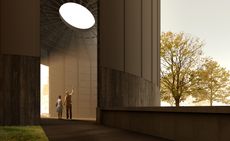 Theaster Gates’ design for Serpentine Pavilion 2022 revealed
Theaster Gates’ design for Serpentine Pavilion 2022 revealedThe American artist and urban planner reveals his plans for the Serpentine Pavilion 2022. Black Chapel has spirituality, music and community at its heart
By TF Chan Last updated
-
Tom Hingston on designing for Serpentine Galleries, the V&A, and Wallpaper*
London-based art director and graphic designer Tom Hingston discusses his visual identities for Serpentine Galleries
By TF Chan Last updated
-
 140 artists on saving Planet Earth
140 artists on saving Planet EarthIn the book 140 Artists’ Ideas for Planet Earth, Serpentine Galleries’ Hans Ulrich Obrist and Kostas Stasinopoulos, alongside leading artists offer innovative solutions to the climate crisis
By Nuray Bulbul Last updated
-
 Counterspace's Sumayya Vally on her Serpentine Pavilion
Counterspace's Sumayya Vally on her Serpentine PavilionCounterspace is the fast-emerging South African architectural practice commissioned to create the latest Serpentine Pavilion in London. Here, its founder Sumayya Vally takes artist and photographer Mikhael Subotzky on a whistle-stop tour of their adopted hometown, Johannesburg
By Ellie Stathaki Last updated
-
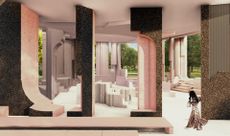 Serpentine Pavilion commission extended for the first time
Serpentine Pavilion commission extended for the first timeCounterspace's anticipated Serpentine Pavillion design will now debut in summer 2021
By Elly Parsons Last updated
